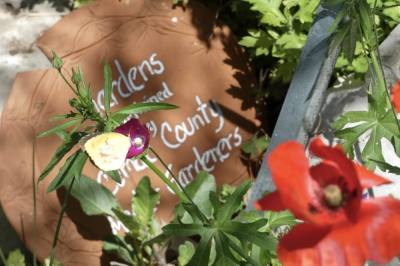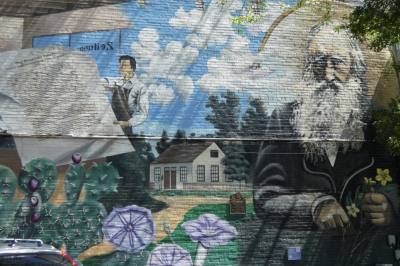Long story short
Lindheimer was a German immigrant who played a significant role in various aspects of early Texas history, including journalism, education and botany, said Luke Speckman, president of the New Braunfels Conservation Society, while guiding a tour of the Lindheimer House, located at 491 Comal Ave., New Braunfels.
The Lindheimer House offers guided tours where visitors can learn about Lindheimer's life, explore the historic house, and gain insights into the early days of New Braunfels and Texas.
The museum showcases original furnishings and artifacts from Lindheimer's time, including his desk, family Bible, eyeglasses, pipes and other personal items. Visitors can see the type trays used for printing, providing insight into the newspaper production process in the 19th century.
Lindheimer was born in 1801 in Frankfurt, Germany. He studied medicine in Heidelberg and became interested in botany. He settled in Texas in 1845 and became involved in various aspects of life in the U.S., Speckman said. He held several positions, including educator, justice of the peace and editor of the German language New Braunfels Zeitung, the first newspaper in town, starting in 1852.
The house was built in 1847 and later expanded when Lindheimer got married in 1852. It served as his residence and also housed his print room where he produced the New Braunfels Zeitung.
The specifics
Operating as a one-man operation, Lindheimer managed everything related to the newspaper, from operating the press to putting the paper together, Speckman said.
The New Braunfels Zeitung was primarily in German, reflecting the language of the local community, and Lindheimer's editorials often covered local events, as well as his travels in Mexico and other areas, Speckman said.
He was known for his editorializing, particularly during significant events, such as the Civil War and the debate over secession. Lindheimer was opposed to secession and slavery, and his editorials reflected these views, which sometimes stirred controversy, Speckman said.
In one instance, individuals unhappy with his views threw his printing press into the river, but Lindheimer managed to retrieve it and still managed to publish the paper that week, Speckman said.
Despite facing challenges, he never missed an issue of the newspaper during his 20-year tenure as editor.
The big picture
Over the years, Lindheimer identified over 1,500 plant species and several reptiles in the region, Speckman said.
"His extensive knowledge of plants allowed him to document and classify numerous species native to Texas, including many that were previously unknown or undocumented," Speckman said.
Most of his botanical discoveries can be found in the garden of his home.
"Lindheimer's botanical contributions went beyond mere identification, Speckman said.” “He actively studied and documented the local flora, contributing valuable information to the scientific community."







